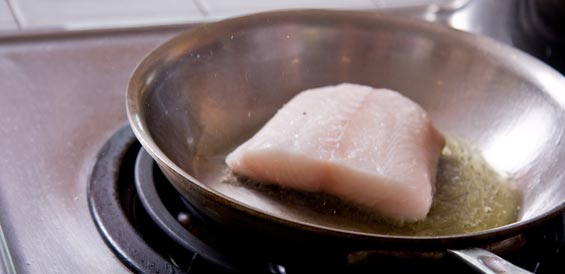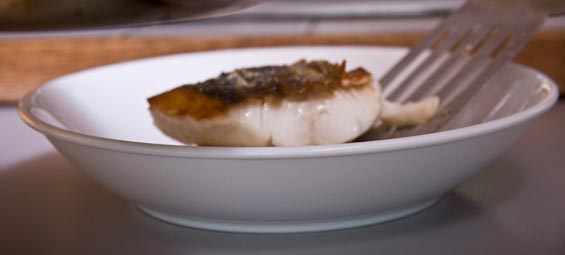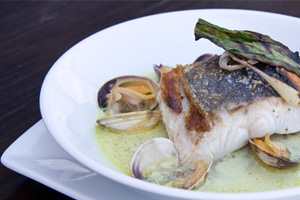How to Pan Sear Fish
You know that beautiful piece of fish you always order in restaurants, the one with the nice crispy skin that you can never seem to replicate at home? It has probably been pan-seared.
Pan searing is one of the best ways to achieve restaurant quality fish at home. The key to achieving that crispy skin is to use very high heat, and to serve the fish as soon as possible after it is finished. Like pan-roasted chicken, this hybrid cooking technique uses the stove top for the initial sear and the oven to finish cooking the fish through.
For this demonstration we used black cod fillets but this method will work for almost any fish, particularly rainbow trout, wild salmon (we recommend King salmon or Pink salmon fillets), or mahi mahi fillets.
Flat fish (such as Pacific halibut or dover sole) tend to have darker, more leathery skin. Because of this, we recommend removing the fish skin prior to pan searing. Obviously there won’t be any crispy skin at the end, but the fish will still be delicious.
DIRECTIONS
1
2
Cut your fish fillet into steaks (the industry standard is 6 oz of fish per entrée portion).
3
4
5

6
7
8

9

Warning: Don’t forget that the pan’s handle is now rocket hot! Make sure everyone in your kitchen knows it too so somebody doesn’t grab what they think is a cool pan handle and burn themselves. We recommend using the professional chef’s symbol for “hot pan, be careful!” which is a hot pad or towel draped over the handle (just make sure it doesn’t touch your heating elements or gas flame).



Comments 7
Great post! I always forget that you don’t have to cook all of it during the pan-searing, and that you can use the oven too
How long do you leave the fish in the oven?
Hi Sharon,
Unfortunately since this is a technique that can be applied to a wide range of fish species and filet sizes, the amount of time in the oven will vary. I would check the fish periodically and remove it from the oven when it looks done (the flesh is opaque all the way through).
Matthew
MarxFoods
Thanks for the info! I have 3- 4 oz trout fillets with skin. I am notorious at making rubbery, dry fish. Can i use this method- pan sear then stick in the oven to prevent this?
If you don’t want to take the time to place in the oven and do the whole thing on stovetop, which is quicker, once you’ve placed the fish in the hot pan skin side down, watch the color of the fish and once it has changed color, (meaning it has cooked), 3/4 of the way from the skin up, gently flip fish to finish and crisp the other side. Watch carefully for the color to change to an opaque and remove carefully but quickly, as you do not want to overcook it, keeping in mind that it all food continues to cook once it’s removed from heat unless you shock it (place in a bowl of iced water). The quicker you serve, the less it will continue to cook and the crispier it will stay. Enjoy!
I have been using olive oil exclusively with everything except peanut oil in vegetables for healthier fats. What is the reasoning for not using olive oil to sear blackened fish?
Hi Lisa,
The concern with using extra virgin olive oil with a high-heat technique like this has to do with the oil’s smoke point. The less refined an olive oil is, the lower the temperature where it starts to smoke and break down into unpleasant compounds.
A more refined “olive oil” will be better suited to this than an “extra virgin olive oil”, and oils like the ones we recommended in the post above are even better suited to cooking at these temperatures.
I hope that helps. Let us know if you have any more questions!
Matthew
Marx Foods